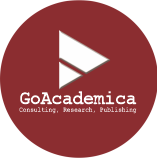PENINGKATAN JUMLAH KUNJUNGAN WISATAWAN PULAU MAITARA DI TENGAH PENDEMI COVID-19
DOI:
https://doi.org/10.15575/jim.v4i1.23413Abstract
Tourism development on Maitara Island is based on several approaches, including increasing competitiveness, community involvement, environmental conservation, and improving the local economy. All of this is an effort to develop tourism to be able to increase the income of the surrounding community and at the same time increase regional income from the tourism sector. The purpose of this study is to analyze the increase in the number of tourists visiting Maitara Island amid the Covid-19 pandemic, so that it is hoped that it will be useful for the local government to maintain and even further improve services in the tourism sector. The data analysis method used in this research is descriptive qualitative to explore findings in the field. The results showed that when the Covid-19 epidemic occurred in 2020 the number of tourists visiting the Maitara Island tourist attraction increased from the previous year, where in the previous year or 2019 when there was no Covid-19 epidemic the number of tourists was only 2,104 whereas when the covid-19 epidemic occurred 19 there was an increase in the number of tourists to 5,600. This increase in the number of tourists is dominated by local tourists, this is influenced by the strict enforcement implemented by the government not to travel outside the area.
References
Adi, S. (2003). Pengertian Peningkatan Menurut Para Ahli. [Online] https://www.duniapelajar.com/2014/08/08/pengertian-peningkatan-menurut-para-ahli/
Al Qital, S., Sunarya, S. L., & Rusydiana, A. S. (2022). Manajemen Pariwisata Halal. Ar Rehla: Journal of Islamic Tourism, Halal Food, Islamic Traveling, and Creative Economy, 2(2), 140-157.
Damanik, J., & Weber, H. F. (2006). Perencanaan Ekowisata. Yogyakarta: Andi Offset.
Darussalam, A. Z., Syarifuddin, S., Rusanti, E., & Tajang, A. D. (2021). Pengembangan Manajemen Pariwisata Halal Berbasis Kearifan Lokal Sipakatau’, Sipakainge’, Sipakalebbi’. Jurnal Ilmiah Ekonomi Islam, 7(1), 96-105.
Dayani, R. (2021). Pelatihan Manajemen Jasa Pariwisata Berkelanjutan pada Pokdarwis Desa Bukit Tinggi Kecamatan Gunungsari. Jurnal Abdi Insani, 8(1), 94-99.
Fip-Upi, T. P. I. P. (2007). Ilmu dan Aplikasi Pendidikan I: Ilmu Pendidikan Teoretis. Imperial Bhakti Utama.
Gabur, M. F. A., & Sukana, M. (2020). Manajemen Pariwisata di Pulau Padar, Taman Nasional Komodo, Labuan Bajo. Jurnal Destinasi Pariwisata, 8(2), 336-342.
Ghozali, I., & Zuhri, S. (2020). Tata Kelola Arsitektur Masjid Sebagai Bagian Manajemen Pariwisata (Studi Kasus Wisata Religi di Surabaya). Dinamika Governance: Jurnal Ilmu Administrasi Negara, 10.
Gunawan, A., Nasir, N., & Hasan, D. (2021, December). PPDM Manajemen Pariwisata pada Pantai Wisata Kuri Caddi Desa Nisombalia Kecamatan Marusu Kabupaten Maros. In Seminar Nasional Hasil Penelitian & Pengabdian Kepada Masyarakat (SNP2M) (pp. 521-526).
Mija, N. K., Senjiati, I. H., & Maulida, I. S. R. (2022, August). Pengaruh Persepsi Konsumen terhadap Penerapan Manajemen Pariwisata Halal Pemandian Air Panas Sari Ater Kabupaten Subang Jawa Barat. In Bandung Conference Series: Sharia Economic Law (Vol. 2, No. 2, pp. 155-160).
Moleong, L. L. (2001). Metodologi Penelitian Kualitatif. Bandung: Remaja Rosda Karya.
Praditya, R. A. (2022). Kinerja Organisasi Pada Manajemen Rantai Pasokan Pariwisata: Bagaimana Peran Manajemen Sumber Daya Manusia, Kepuasan Pelanggan. International Journal of Social, Policy and Law, 3(2), 17-21.
Sidiq, A. F., & Dwimawanti, I. H. (2019). Manajemen Pariwisata Oleh Dinas Kepemudaan, Olahraga dan Pariwisata Kabupaten Pekalongan (Studi pada Objek Wisata Kepemilikan Pemerintah Kabupaten Pekalongan. Journal of Public Policy and Management Review, 8(4), 199-211.
Sosiady, M. (2022). Analisis Manajemen Pariwisata Berbasis Cagar Budaya Potensi Bagansiapiapi menuju Kota Pusaka. Jotika Journal in Management and Entrepreneurship, 2(1), 51-58.
Srisusilawati, P., Kusuma, G. P. E., Budi, H., Haryanto, E., Nugroho, H., Satmoko, N. D., ... & Ardiansyah, I. (2022). Manajemen Pariwisata. Penerbit Widina.
Sriwahyuni, T., Oktoria, O., & Dewi, I. P. (2019). Pengembangan Sistem Informasi Manajemen Pariwisata Berbasis Web. Jurnal Teknologi Informasi dan Pendidikan, 12(1), 92-99.
Undang Undang Nomor 10 Tahun 2009 tentang Kepariwisataan.
Uno, H. B. (2008). Teori Motivasi & Pengukurannya Analisis di Bidang Pendidikan. Jakarta: Bumi Aksara.
Wisnawa, I. M. B., Par, A., MM, M. P., Prayogi, P. A., Par, S. S. T., Par, M., & SE, M. (2021). Manajemen Pemasaran Pariwisata-Pengembangan Potensi Produk Wisata Perdesaan. Deepublish.
Wisnawa, I. M. B., Prayogi, P. A., & Sutapa, I. K. (2019). Manajemen Pemasaran Pariwisata Model Brand Loyalty Pengembangan Potensi Wisata di Kawasan Pedesaan. Deepublish.
Yuniningsih, T., Dwimawanti, I. H., Widowati, N., & Sidiq, A. F. (2019, November). Perencanaan dalam Pengembangan Pariwisata di Kabupaten Pekalongan. In Conference on Public Administration and Society (Vol. 1, No. 01).
Downloads
Published
How to Cite
Issue
Section
Citation Check
License

This work is licensed under a Creative Commons Attribution-ShareAlike 4.0 International License.













